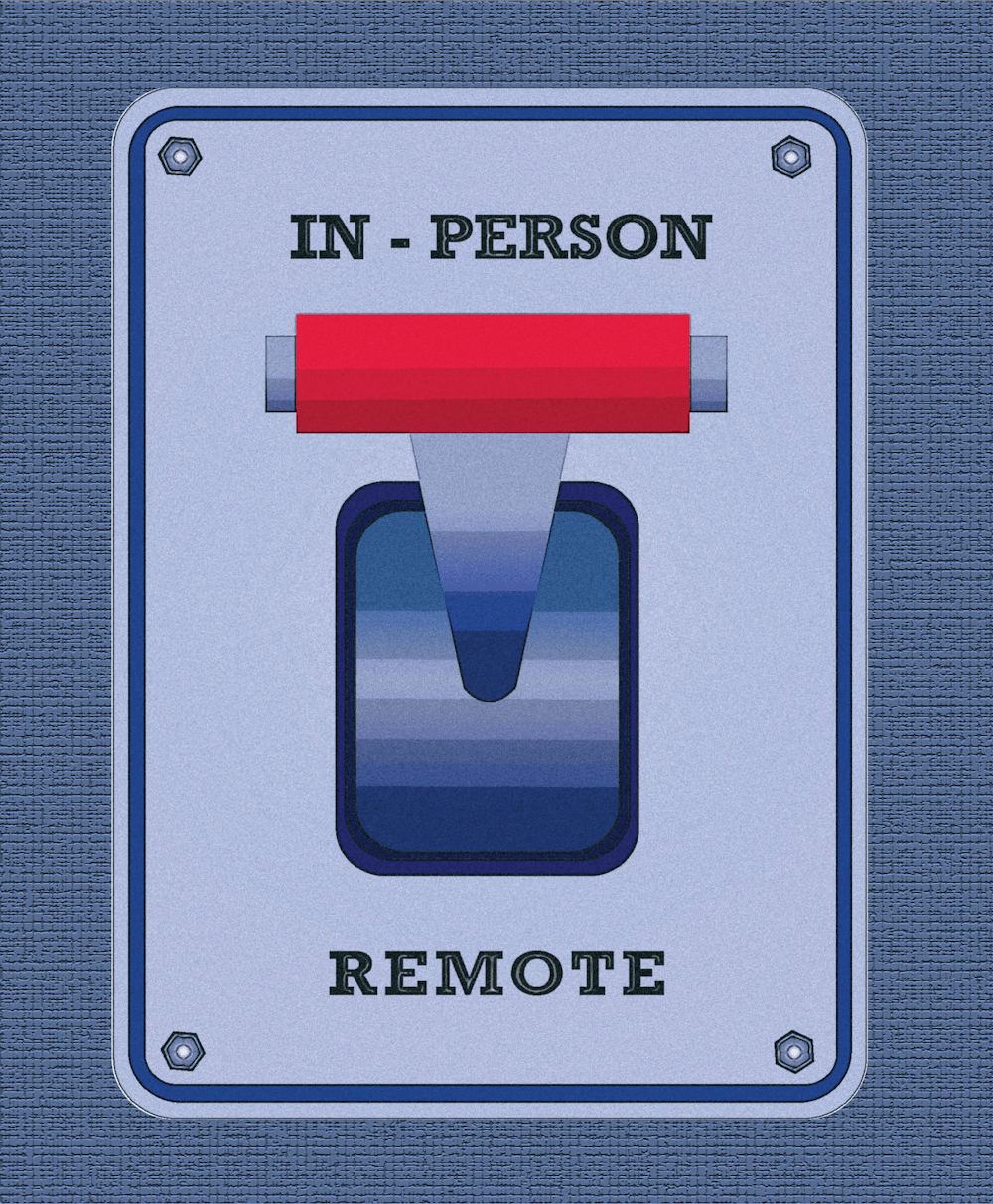As the semester drew to a close last fall, low case numbers and high vaccination rates made Miami University students hopeful that the spring semester would look more normal.
Then came omicron.
Now, with cases in Oxford on the rise and McCullough-Hyde Memorial Hospital running out of ICU beds, students and faculty are coming to terms with the prospect of a semester that looks much like the last.
“We are not at this moment changing anything from last semester,” Provost Jason Osborne wrote in an email to The Miami Student. “We are adapting where the CDC has changed guidance, and those updates have been communicated through the COVID task force emails.”
Osborne said about 91% of undergraduate classes will be taught in person this semester, similar to the number for the fall.
George Denman, a visiting faculty member in the marketing department, said he’s glad his marketing class will be held in-person.
“I personally feel that being there live in front of these students provides a much better format, one where students could actually bond much easier than online,” Denman said.
Despite the recent surge in cases, Denman said he feels comfortable teaching face-to-face.
“I'm not really concerned because I'm vaccinated and boosted,” Denman said. “Even if I do get it, I'm in good health at my age, and I think that the symptoms would be minimal at best.”
Denman said he would understand if the omicron variant forced classes to move online, but he hopes that won’t happen.
While the majority of classes this semester are in-person, some professors are keeping at least a portion of their meetings online.
Shanieka Pope, an assistant clinical professor of family science and social work, said the hybrid synchronous format of her FSW312 (Human Behavior in the Social Environment) class had already been determined before it was assigned to her.
Enjoy what you're reading?
Signup for our newsletter
Although Pope didn’t personally select the hybrid option, she does have some discretion with holding in-person classes.
“Say, for instance, a good amount of my students are out or quarantining, then I do have the discretion to make my class remote,” Pope said. “But that’s only on a week-by-week basis, so I could not shut down in-person class for the entire semester.”
Pope said high numbers of absences last semester almost forced her to go remote, but it never came to that. She hopes she can keep her meetings in person this semester as well.
“There's synergy in the room with face-to-face,” Pope said. “Students may bring something to the discussion that resonates with the other students, and you just have that flow of ideas and expressions.”
In addition to the benefits for students, Pope said face-to-face instruction is less tiring.
“When I'm online, I tend to escalate my expressions,” Pope said. “I start to sweat because I feel like I have to make my gestures and my personality bigger just to connect with the students.”
Pope said she is cognizant of the risks of becoming infected with COVID-19 when teaching in person but feels that she takes adequate measures to protect herself and others.
“[COVID-19] is in the back of my mind, but I feel that I'm engaged in safe practices,” Pope said. “I try to model [social distancing, mask wearing, etc.] for my students.”
Like some faculty, many students also prefer in-person instruction.
Sidra Capriolo, a junior psychology and Spanish double major, has both online and in-person courses this semester. She said she learns better in a face-to-face environment but appreciates the convenience her online classes offer.
“It's kind of convenient to be online as an off-campus student just because I don't have to walk all the way to campus and back,” Capriolo said.
Because Capriolo is vaccinated and not immunocompromised, she feels comfortable attending classes in person.
While many students prefer being in-person, views are divided on whether online courses should be synchronous or asynchronous.
Capriolo said she likes synchronous format better because of the structure it provides.
“I have a lot of responsibilities outside of class,” Capriolo said. “Finding time to not only do homework for my other classes but also learn everything for my asynchronous ones was really hard.”
Sydney Cain, a senior psychology and theater double major, said she enjoys the freedom that asynchronous classes provide.
“It was nice to be able to move at your own pace and do what you needed to do,” Cain said. “And Zoom fatigue is definitely a real thing, so a synchronous setting was really hard for me.”
As Miami students and faculty enter their fifth semester since the onset of COVID-19, many harbor ambivalent feelings of frustration and acceptance.
“I want things to go back to where they were before, but at the same time, I feel I've adapted [to it],” Capriolo said. “I'm so sick of COVID and everything that it has caused, but I'm not sure if it will ever truly go away.”




